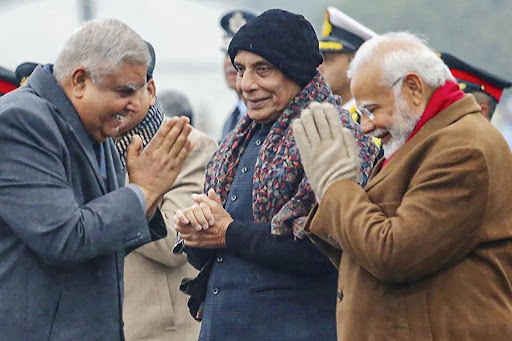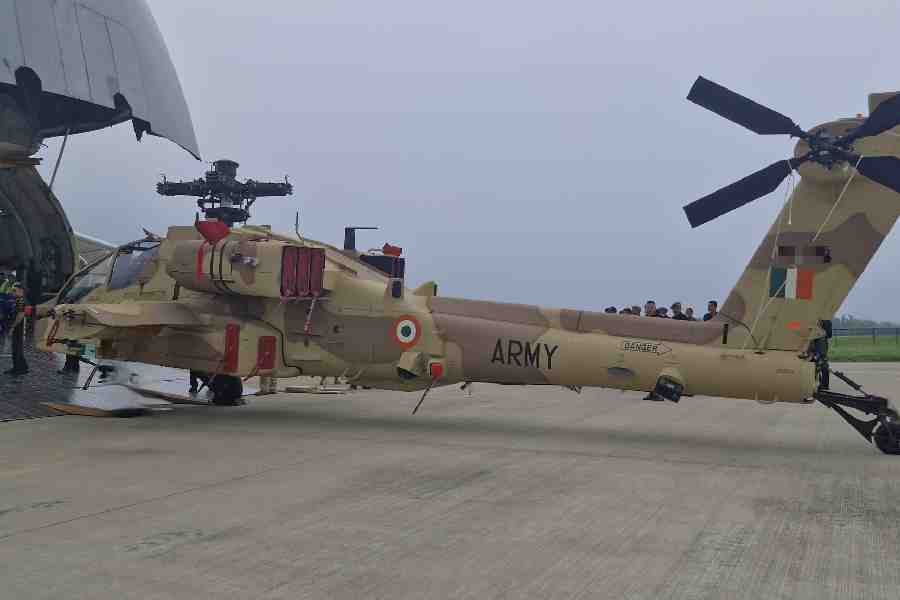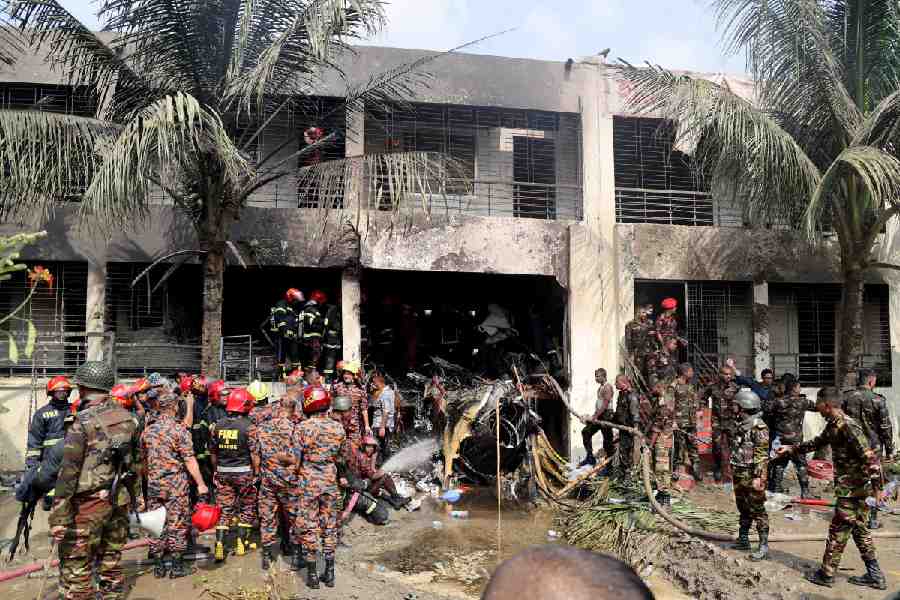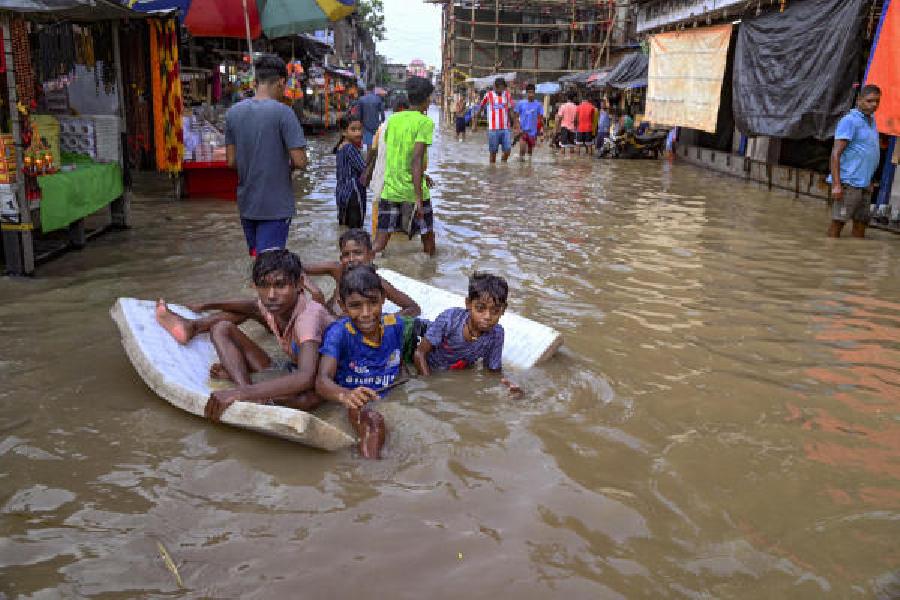
Once maligned for its election violence, Bihar has undergone a sea change. No deaths were reported, no major incident of violence occurred, the threat in 33 Maoist- affected districts was neutralised despite a high-pitched, emotional, no holds barred campaign by political parties and alliances.
Bihar chief electoral officer Ajay V. Nayak was a visibly relaxed man in his office. Speaking to The Telegraph on Friday evening, he smiled to say that he felt as if he had "come out of his daughter's marriage". But he hastened to add that the poll process would be complete only when the results are declared on Sunday and he submits a notification containing the list of elected representatives from the 243 Assembly constituencies to Governor Ram Nath Kovind on the evening of November 9 or by November 10.
What did it take to ensure such a violence-free election in a state that had earlier been infamous for poll-related violence? Even during the Lok Sabha elections last year, Naxalites had triggered landmines in which six CRPF personnel were killed and over a dozen wounded in Aurangabad and Munger districts.

Nayak said the Election Commission was very methodical with the preparations that began seven to eight months ago.
"Preparations became very intensive in the last four months and all possible factors that could disrupt the polls - security issues, Naxalite threat, floods, festivals, examinations - were factored in. Our focus was to get paramilitary forces at least one month before the declaration of election dates," Nayak said.
Bihar did get 220 companies (each company consists of about 100 men) of central paramilitary forces from the Union home ministry about a month before the election dates were declared by the commission (on September 9). They were immediately despatched to sanitise Naxalite-affected areas, conduct de-mining operations and dominate the hilly and forested terrain.
The election boss said Maoists were a very potent threat this time too like previous elections, but they were not given the opportunity to work or allowed to group. The number of landmines and explosives recovered was the highest in the recent past.
"The Naxalites tried their level best but did not succeed. The landmines were de-mined by the security forces and the Naxalites could not replant them due to area domination. The standard operating procedure in this regard was ruthlessly followed," Nayak added.
Helicopters, unmanned aerial vehicles, satellite imagery were used for keeping vigil on Maoist areas. Satellite phones were provided for communication in the interiors or in the hilly terrain where mobile and basic phone facilities are weak. Motorboats were used to patrol riverine areas while patrolling on motorcycles was introduced on a large scale in Naxalite areas.
Live webcast from 700 to 800 booths, over 1,000 video cameras and pictures sent by mobile phones were used to keep a tab on polling stations in every phase.
Bihar inspector-general of police (operations) Sushil M. Khopde, who was in charge of anti-Naxalite operations and security in the Maoist districts, said 64 powerful landmines, 125 detonators, 13 gelatine sticks, 43 firearms and 648 kilograms of explosives were seized which helped check the Red threat.
"Besides paramilitary forces, we kept 40 companies of Bihar Military Police (BMP) at strategic locations to oversee VVIP movement and tackle law and order situations. This went a long way in checking non-Naxalite violent situations," Khopde added.
Nayak said a detailed interaction was held with the police headquarters about four months ago and details of non-bailable warrants, especially those pending for over six months, and troublemakers in vulnerable areas were identified.
The Election Commission identified 24,757 vulnerable tolas or habitations with around 15 lakh voters belonging to weaker sections with the help of district magistrates, superintendents of police and other officials working in lower ranks, who did the assessment on its behalf.
Inputs from political parties and candidates were also taken in this regard.
The warrants were executed and troublemakers were either arrested or had to sign bonds stating that they would not commit any mischief. Central armed police forces staged flag marches and the poll panel monitored the tolas to instil confidence.
Nayak expressed happiness that very few complaints about photo electoral rolls were received this time, though they were not yet perfect. About 4 lakh duplicate entries were removed and 1.2 crore e-voter slips were distributed through SMS to cut down chances of people not receiving the important document before the polls.
The panel commissioned 89,000 vehicles to take care of transport logistics regarding movement of polling and security personnel. Many automobile owners volunteered to give their vehicles as they trusted the commission's capabilities to take care of them, their drivers, and pay the rent on time, Nayak said.
General observers, one for each constituency, to keep a tab on the overall poll process, expenditure observers deployed for every three to four constituencies to oversee use of money in polls and police observers were deployed - one for each district - to keep a watch on use of central and state police forces. Apart from them, over 3,000 micro-observers were deployed in each phase of elections.
All complaints regarding partisanship on the part of officials were strictly dealt with and a few of them were even removed from election duty, despite, as Nayak put it, the non-availability of concrete evidence against them.
However, 12 people including four paramilitary personnel, one home guard, two drivers and three polling personnel died during election duty. The EC said that the deaths were due to heart attacks.
Nayak also said that the Electronic Voting Machines (EVMs) and Voter Verifiable Paper Audit Trail (VVPAT) functioned nicely in all the five phases and just two to three per cent of them malfunctioned, which was considered normal. All faulty units were replaced within two hours as stipulated by the EC.
So what next as the team of Nayak, including additional chief electoral officers R. Lakshmanan and Arvind Kumar Chaudhary and other senior officials, has been working continuously for the last four months?
"We definitely need a break," Nayak said. "And we will decide among ourselves who will go on leave when."











